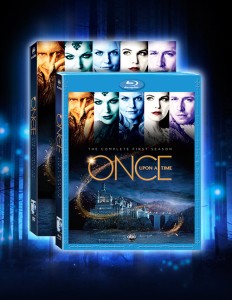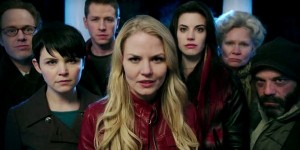Envy, jealousy and murder. All the makings of a good children’s story, no?
If you don’t think so, consider the children’s classic Snow White in which the Queen, who is envious and jealous of Snow White’s beauty, tries to kill her with a poison apple. The reason the story is popular, however, is because love conquers all in the end with Prince Charming saving Snow White’s life through true love’s kiss.
So there you have a fairy tale addressing some of life’s big themes – envy, pride, good, evil – in an entertaining way, even a relatable way. I suspect a lot of young girls who have to deal with “mean girls” and bullies can relate to Snow White’s struggle against the Queen. As a character in the pilot episode of the ABC series “Once Upon a Time” says, “What do you think stories are for? These stories – the classics. There’s a reason we all know them. They’re a way for us to deal with our world. A world that doesn’t always make sense.”
 I re-watched that episode of “Once Upon a Time” the other day on the recently released Blu-Ray edition provided to me by the studio. It reminded me of why this creative, thoughtful show that modernizes classic fairy tales hooked me from the very beginning.
I re-watched that episode of “Once Upon a Time” the other day on the recently released Blu-Ray edition provided to me by the studio. It reminded me of why this creative, thoughtful show that modernizes classic fairy tales hooked me from the very beginning.
Some new TV series take a few episodes to connect with viewers because there are numerous storylines and characters to introduce. “Once Upon a Time” had the advantage of starting from a familiar place because it’s populated by characters most of us know: Snow White, Prince Charming, the Evil Queen, Pinocchio, Red Riding Hood, and Rumplestiltskin being just a few.
Not only do we see these characters in their natural environment in FairyTale Land where their backstories are developed far beyond the original tales authored by the Brothers Grimm, Hans Christian Anderson and others; we see them in the modern world – specifically, a town called Storybrooke, Maine, to which they were all transported without any memory of their past lives after the Evil Queen cast a spell. Why did she do it? Well, for one thing, she’s evil. And she also saw it as the only way to destroy the happiness of Snow White and Prince Charming whom she detests. Everybody else is basically collateral damage.
The one hope for the Fairy Tale characters to regain their memories and return to their old lives comes from Emma Swan, the baby daughter of Snow and Charming that was magically sent to the good ole USA before the Queen’s curse could infect her too. Rumplestiltskin foretold that at age 28, she would become the savior of her ancestors. Emma doesn’t know who she is, but she starts the series as an unbelieving, reluctant savior heading towards her destiny.
Trust me, it makes more sense than it sounds like. TV shows, after all, are meant to be watched and experienced, not described.
I’ve written about “Once Upon a Time” episodes before, specifically the ones dealing with Rumplestiltskin selling his soul to gain power – and the one in which Snow White is consumed by revenge against the Queen, risking her own soul in the process.
One of the reasons the show is a favorite of mine is that episodes, like these can be seen as parables. Jesus taught through parables for a reason. He realized that human beings can be resistant to being told what to do, so instead He shared stories in which we had to use our own brains to analyze the situation. Stories force us to internalize people’s choices, wrestle with them, then come to our own (hopefully correct) conclusions about them. It may be difficult for us to see how destructive our own feelings of envy or anger toward others are. But seeing another person struggle with the same feelings, along with the destructiveness that ensues, might have a better chance at cracking through our own obstinacy.
Then again, it’s not really the avoidance of the sin that’s attractive, but the positive option it allows. In the Snow White/revenge story I just referenced, it’s not so much that she avoids hatred, but that she chooses love. From a Christian standpoint, she responds to grace. As Catholic author Flannery O’Connor explained, “There is something in us, as storytellers and as listeners to stories, that demands the redemptive act, that demands that what falls at least be offered the chance to be restored.”
 So far, that’s something “Once Upon a Time” has gotten right. Characters are offered chances at redemption – sometimes at great cost – but they’re not always accepted. The fun of storytelling, of course, lies in the journey so it will be interesting to see where the show goes from here when Season Two premieres on Sunday September 30 at 8:00 EST/7:00 CST.
So far, that’s something “Once Upon a Time” has gotten right. Characters are offered chances at redemption – sometimes at great cost – but they’re not always accepted. The fun of storytelling, of course, lies in the journey so it will be interesting to see where the show goes from here when Season Two premieres on Sunday September 30 at 8:00 EST/7:00 CST.
In the meantime, you can relive Season One or experience it for the first time on DVD and Blu-ray. Not only is it entertaining storytelling; as Mary Margaret (Snow White’s Storybrooke alter-ego) says, these stories offer “the most important thing anyone can have: hope. Believing in even the possibility of a happy ending is a very powerful thing.”











